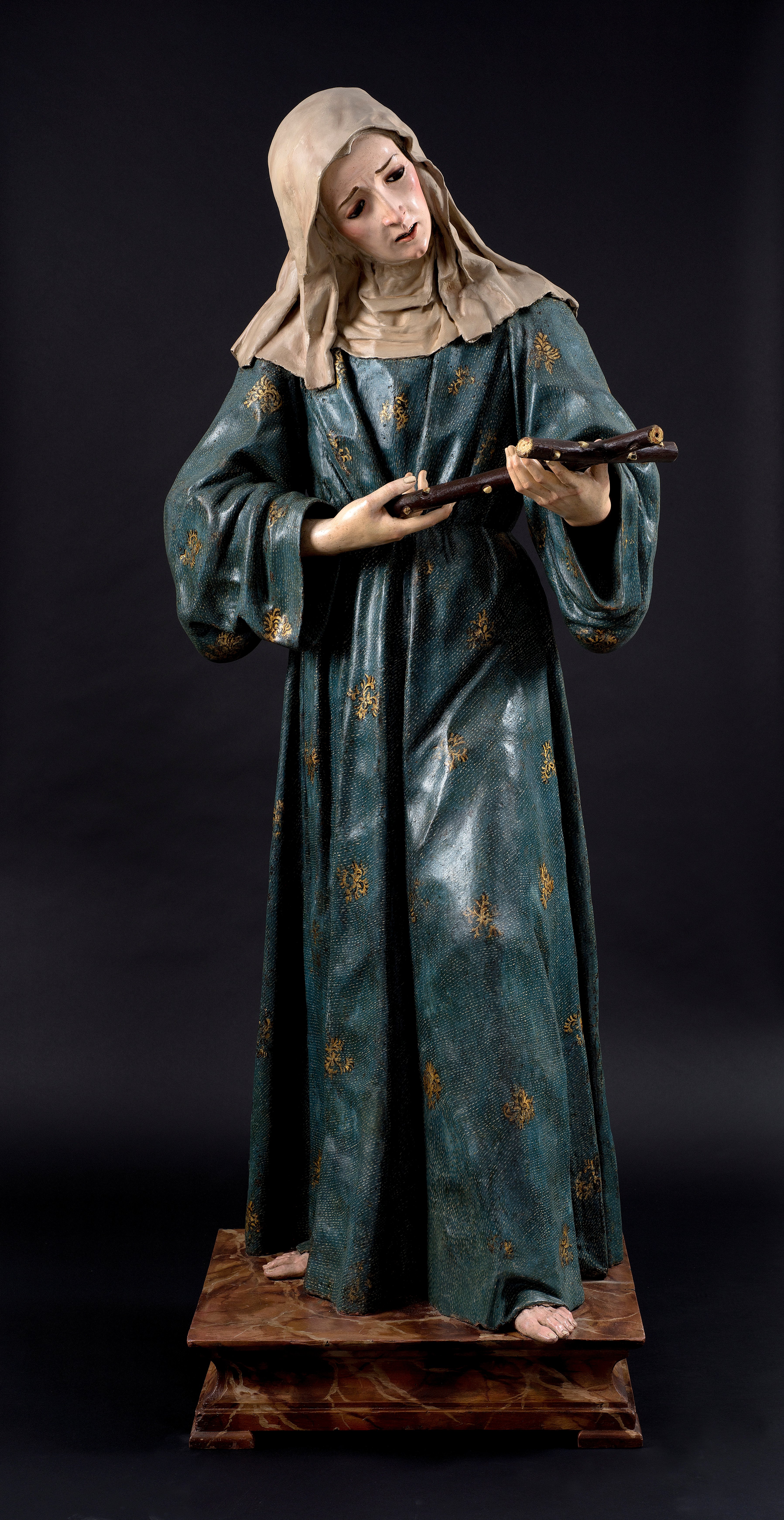
A convent of nuns in Grenada, Spain is under investigation by the country’s national police, after a sculpture of a saint near-identical to one that formerly sat above the altar at a local church popped up for sale in the TEFAF New York fair catalog.
The 17th-century wooden sculpture—offered by Madrid-baser dealer Nicolas Cortes for €350,000 ($390,446)—has been identified as a depiction of Italian saint Margarita de Cortona, created by Baroque sculptor José de Mora. It’s believed to have been illicitly sold by the Franciscan priory after the convent’s closure in 2018. In Spain, the vending of church valuables is illegal unless conducted by the state.
Sister Josefa, the mother superior of the convent, denied the accusations in a statement to El País, claiming that the church is still in possession of the look-alike statue—though she would not disclose its whereabouts—and citing the positioning of the figure’s left hand as proof that the work offered by Cortes is a different sculpture.
The nun went on to suggest that it was merely a case of confusion, positing that the statue at TEFAF New York was mistaken for the convent’s own, which she said is actually a depiction of St. Rose of Viterbo, made by an unknown artist.
For his part, Cortes has been cooperating with authorities, maintaining that he purchased the sculpture for €100,000 from an antique dealer in 2018; he provided the purchase invoice and export permit to Spanish police. “[The dealer] told me it was from a private collection,” he told El País. “I wouldn’t think of going to a convent to buy because it’s illegal.” Despite the controversy, the statue is still currently listed as available on the gallery’s website.
“The sculpture ‘Saint Margaret of Cortona’ was acquired from an antique dealer in 2018 and subsequently exported that same year from Spain to the United Kingdom, strictly following the established legal channels at all times,” the gallery reiterated in a statement sent to Artnet News. “It has been recently exhibited at the TEFAF New York fair, without being sold. Currently the work is in Spain again.”
This is not the first time that the convent in Grenada has been suspected of selling off religious artworks. In 2018, other items it owned, including a processional altarpiece and additional statues, were spotted at a flea market in Madrid. Though the nuns claim the objects in question had been sent for restoration, Grenada residents said that one of the statues matched a description of a work detailed in a tourist guide of the city’s legacy.